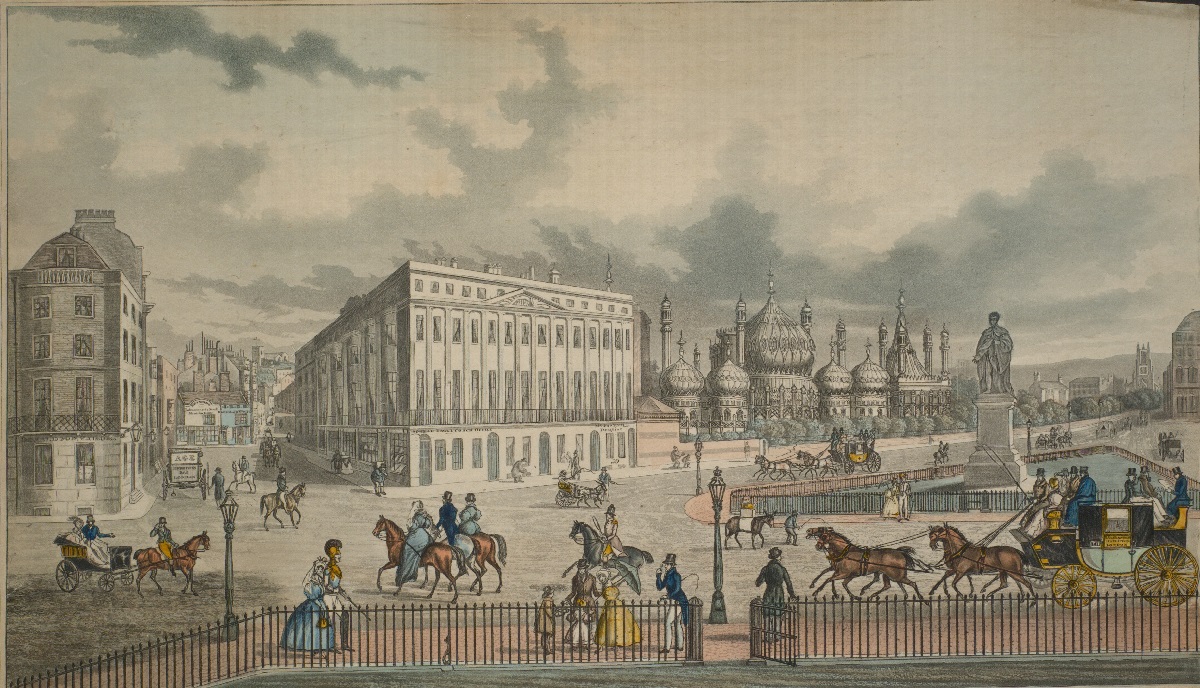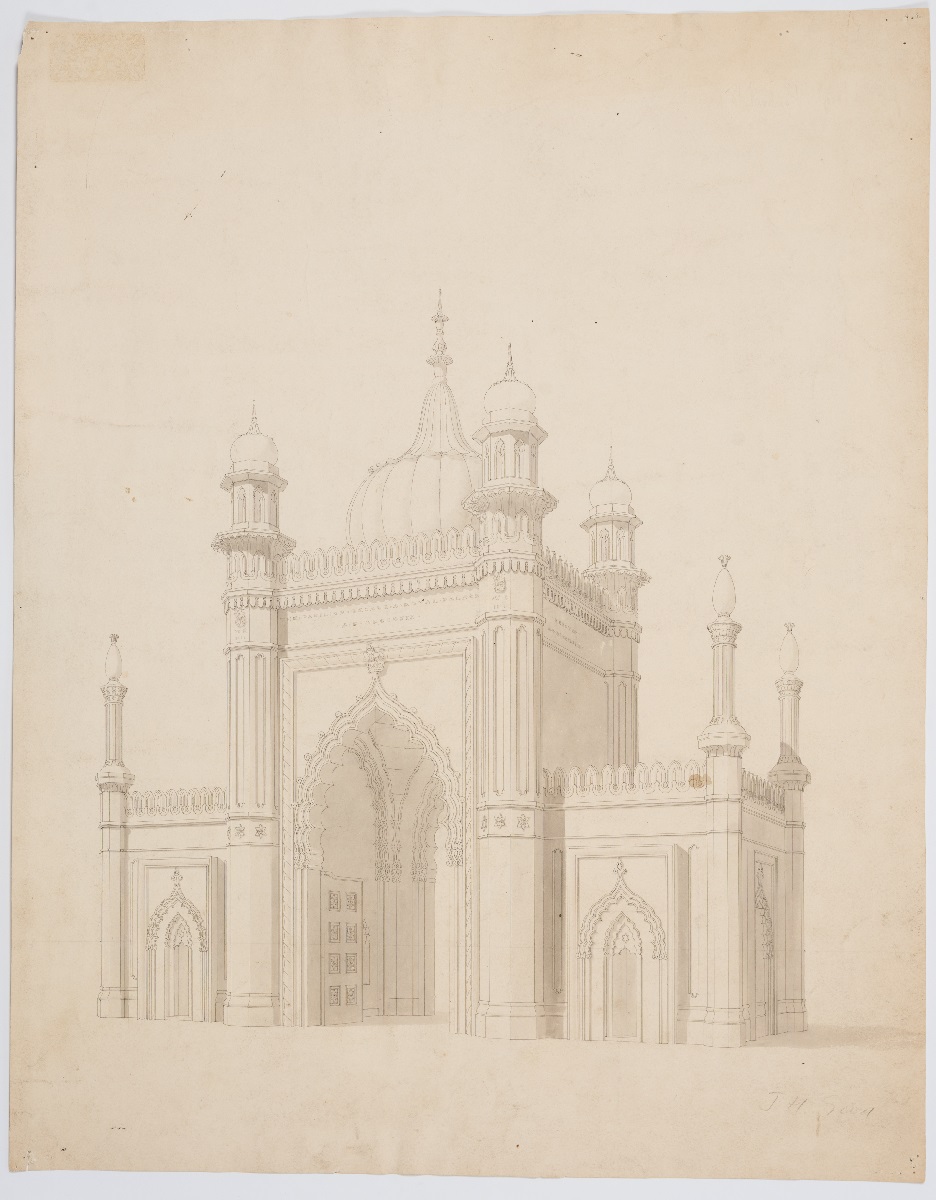William Walker Snow. 1784-1862 Keeper of the William IV gate.

Discover more about William Walker Snow, gatekeeper at the Royal Pavilion, 1851. William had an eventful life, including many roles before he was employed as Gate-keeper, where he oversaw the tragic events that occurred during a stormy February in 1852.
William Walker Snow was born in Leyton, Essex in 1784. He married Mary Hill in Colchester in 1818. They came to Brighton and set up business with his brother John, running a Coaching Office in Castle Square from the 1820’s to the 1840’s.
From here they ran the coaches ‘Sovereign’ and ‘Dart’ daily from Brighton to London. 1822 Snow & Co are listed at the Spread Eagle coach office in Castle Square. At some point in the 1820’s the Snow brothers suffered severe financial loss, when over 100 of their horses were lost to a contagious disease, stripping the Snows of their hard earned savings.
At the time of the 1841 census William and Mary were living at 20, St George’s Street, with their servant Susannah Paddle. In 1845 William appeared before the Magistrates for over-loading his coach. It was constructed to carry six inside and 13 outside passengers, but he was carrying 18 passengers on the outside, causing the horses distress.
By the following year, a subscription was raised for William, as the opening of the railways had destroyed his coaching business. Despite the lack of passengers he still continued to ride daily from Brighton to London with the hope of making some money.
During the 1840’s he had also taken on a tobacconists business at 112 Trafalgar Street.
It would seem that the railways put an end to William’s coaching business as by 1851, he was living at the William IV gate at the Royal Pavilion, employed as the Gate-keeper. Susannah Paddle continued as his loyal servant.

William IV had built the gatehouse in 1832, as the north entrance into the Pavilion estate. Two enormous doors were added, each of them 13 feet high, and 7.5 feet wide, each door being 3 inches thick.
February 1852, during an extremely stormy day, William had gone out to close the gates at about 5.30p.m. As he did so the wind overpowered him, and the left gate blew with too much force almost knocking down Mr Snow.
The gate closed with such violence that the upper hinge snapped. The following morning William reported the hinge and the door and a ‘deal plank’ placed against it. By the following day, around 4p.m. the wind began to rage again and blew down on some people sheltering from the weather. A lady named Miss Michelson was knocked down, and the gate fell on top of her. She died within half an hour of the accident.
William died in 1862, at the age of 78. A subscription was raised for his burial but also for his servant Susannah Paddle who by now had been his servant for 33 years. Susannah died the following year.
In 1901, the Chief Constable Mr Gentle was handed a box, which had been handed down through various Police Constables. It contained the will of William Walker Snow, gatekeeper at the Royal Pavilion, and £13 6s. In cash, also some articles of jewellery. They had been deposited after the death of Mrs Paddle being his housekeeper and sole executrix.